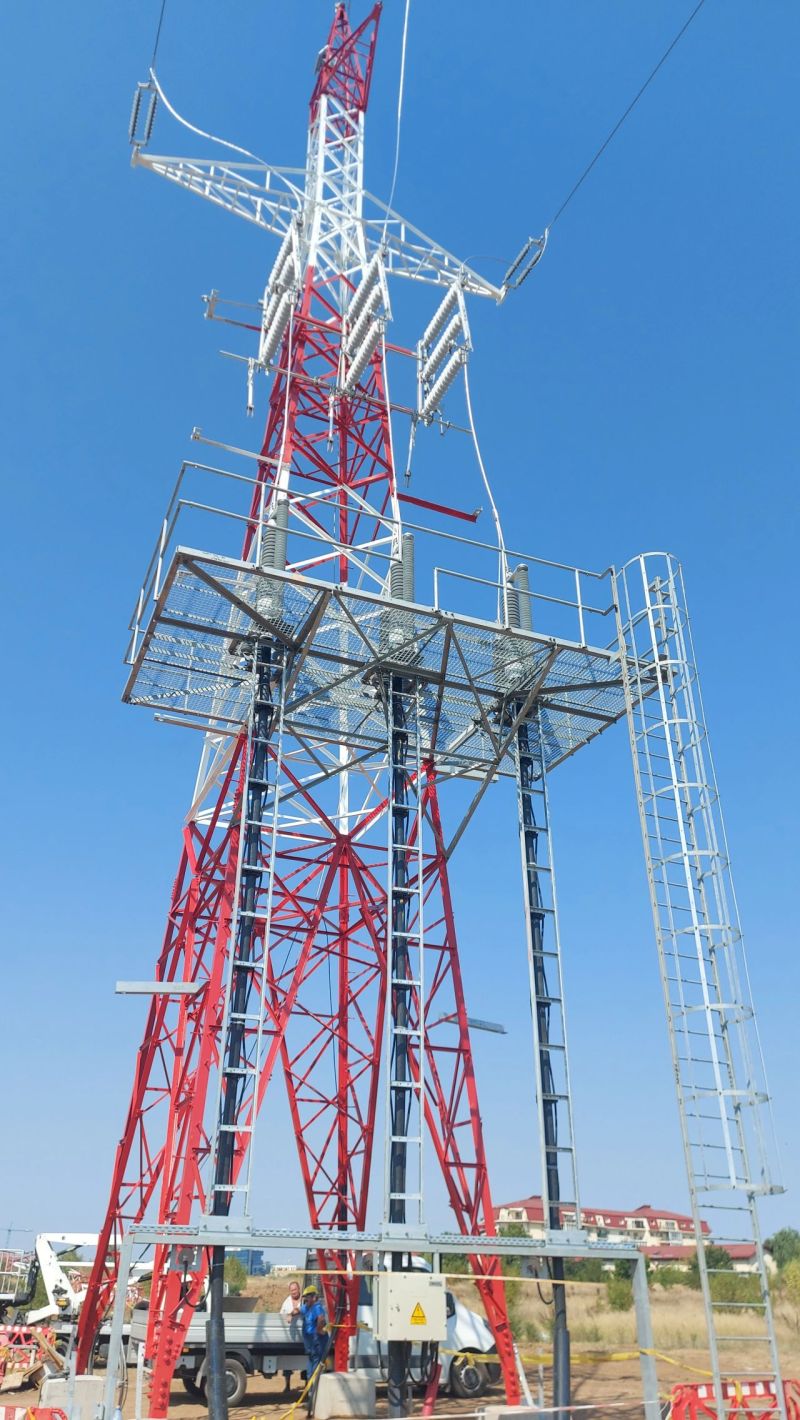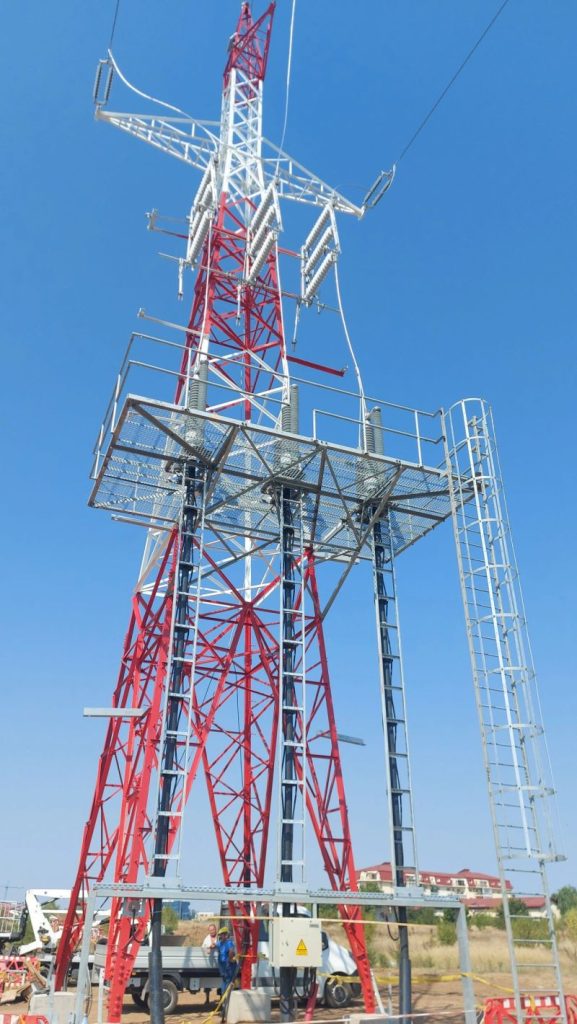
Transition tower on mixed line
On today’s photo there is a nice modern bright transition tower (pylon, support) for mixed cable and overhead line. What can be advised to improve this facility next time? Unfortunately, many details are not so good:
✅ Link-boxes for cable screens.
✅ Black pipes which protect cables above the ground level.
✅ Red corrugated pipes which protect cables too.
✅ The location of metal-oxide surge arresters (MOA).
✅ Meters/counters to control MOA.
✅ Stairs to climb the tower from the ground level and lack of fence around the tower.
✅ The absence of devices to have selective automatic reclosure of the mixed line.

Some of my recommendations about exposed transition tower:
1️⃣ Do not put metal-oxide surge arresters (MOA) so close to cable terminations. The first reason – any short-circuit inside MOA can lead to the serious damage of cable termitation (changing of the cable termination is very defficult process). The second reason – it’s important to provide a uniform voltage distribution along the MOA’s height, but, unfortunately, cable terminations interfere with this distribution and reduce the lifetime of MOA. The minimum recommended distance is equal to the height of MOA (for 110 kV class – about 1 meter, for 220 kv class – about 2 meters).
2️⃣ Do not put link-box for cable screens so close to the ground. The first reason – third parties can open box and be killed by induced voltage of 50 Hz (in case of one-side screens grounding). The second reason – the link-box may be broken/stolen by vandals. The recommended height of the box placement on transition towers without fence is at least 2.5 m above the ground. The same recommendations can be given for the stairs to climb the tower – stairs below 2.5 m from the ground are not allowed.
3️⃣ Do not use black cold water PE-pipes for laying high voltage power cables. The first reason – PE-pipes (with blue lines) are only cold water pipes and, according to regulatory documents, are designed ony for temperatures to more than 40 degrees, however power cables with XLPE insulation can have up to 90 degrees or even more. The second reason – PE-pipes are really flammable that is not a problem in case of water but is dangerous in case of cables, espesially above the ground. On the market there are special pipes in the market for power cables that have the appropriate temperature and resistance to burning.
4️⃣ Do not use traditional red corrugated pipes. The first reason – the are not persistent to UV, and due to this fact they will be damaged by son after 5 years. The second reason – they are flammable. On the market there are special corrugated pipes for power cables that have the appropriate temperature and resistance to burning.
5️⃣ Do not equip metal-oxide surge arresters (MOA) with any devices for counting of impulses or for measuring AC currents. The first reason – they are useless (its a theme for my next post). The second reason – on the presented photo they are located on the same frame with link-box, that increases the probability of these counters to be stolen by vandals.
